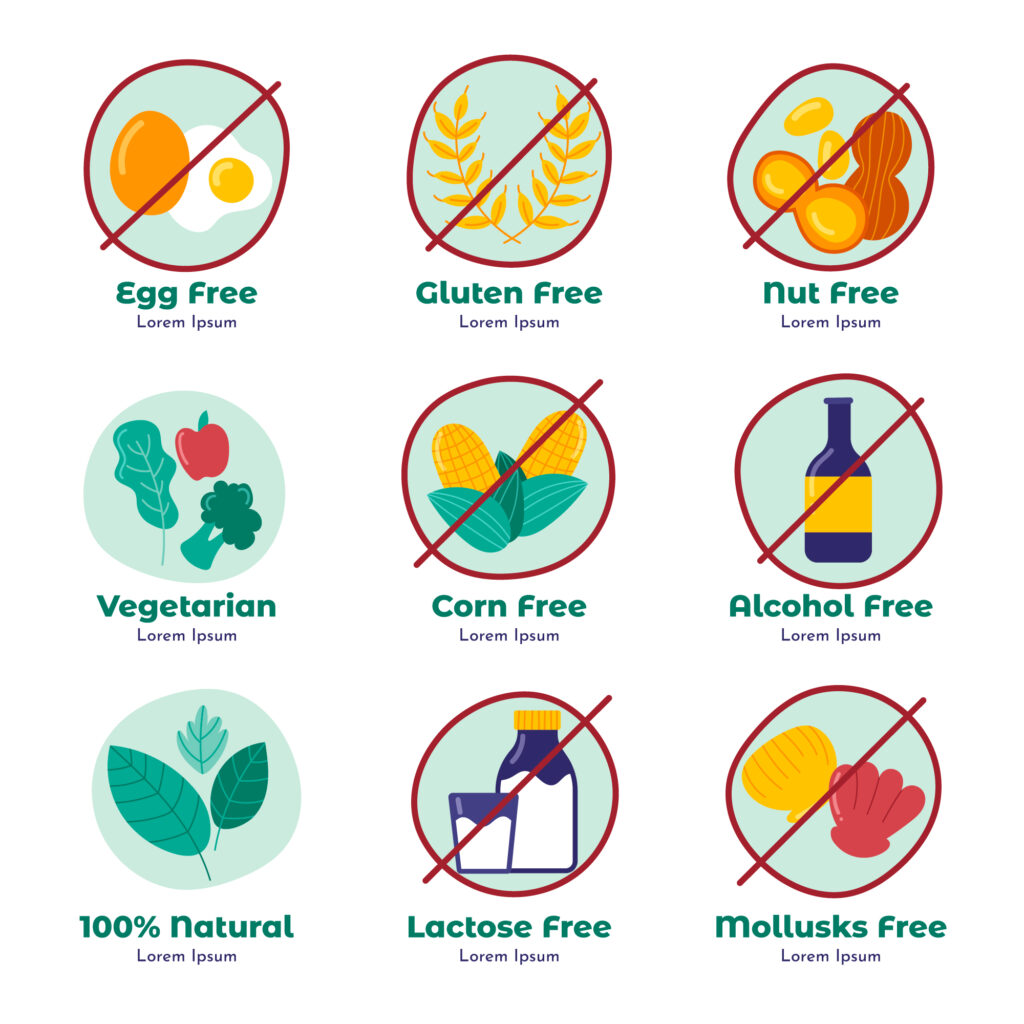Understanding Food Allergies: Causes, Symptoms, and Management
Introduction
Food allergies are a growing public health concern affecting millions of individuals worldwide. Unlike food intolerances, which can cause discomfort but are generally not life-threatening, food allergies can lead to severe and sometimes fatal reactions. As awareness increases, it is vital to understand the causes, symptoms, and management of food allergies, as well as the importance of education and prevention.

What Are Food Allergies?
A food allergy occurs when the body’s immune system mistakenly identifies a specific food protein as harmful. This triggers an immune response, leading to various symptoms that can range from mild to severe. The most common allergens include:
- Peanuts
- Tree nuts (e.g., walnuts, almonds)
- Milk
- Eggs
- Wheat
- Soy
- Fish
- Shellfish
The immune system produces immunoglobulin E (IgE) antibodies in response to these allergens, which can cause a cascade of symptoms upon subsequent exposures.

Causes of Food Allergies
The exact cause of food allergies is still not fully understood, but several factors contribute to their development:
- Genetics: A family history of allergies or asthma can increase the likelihood of developing food allergies. Children with allergic parents are more susceptible to food allergies.
- Environmental Factors: Early exposure to allergens, changes in dietary patterns, and reduced microbial exposure during childhood can influence the immune system’s response to foods.
- Age: Food allergies are more common in infants and young children. Many children outgrow certain allergies, particularly those to milk and eggs, but allergies to peanuts and tree nuts often persist.
- Underlying Health Conditions: Conditions like eczema and asthma are often associated with food allergies. The “allergic march” describes how individuals may develop multiple allergies as they age.
Symptoms of Food Allergies
Food allergy symptoms can appear within minutes to hours after exposure to an allergen. They can vary widely among individuals and may include:
- Skin Reactions: Hives, eczema, or itching are common early signs.
- Gastrointestinal Symptoms: Nausea, vomiting, diarrhea, or abdominal cramps can occur.
- Respiratory Issues: Sneezing, nasal congestion, throat tightness, or wheezing may develop.
Anaphylaxis: A severe, life-threatening reaction that requires immediate medical attention. Symptoms include difficulty breathing, swelling of the throat, rapid pulse, dizziness, and loss of consciousness.
Diagnosis of Food Allergies
Diagnosing food allergies involves a comprehensive approach, including:
- Medical History: A detailed account of symptoms and potential exposures to allergens is critical.
- Physical Examination: Healthcare providers assess symptoms and conduct a physical exam.
- Skin Prick Tests: Small amounts of suspected allergens are introduced into the skin to observe for reactions.
- Blood Tests: Specific IgE tests measure the immune system’s response to particular allergens.
- Oral Food Challenges: Conducted under medical supervision, this test involves consuming small amounts of the suspected allergen to monitor for reactions.
Management
Currently, there is no cure for food allergies, but effective management strategies can help prevent reactions:
- Avoidance: The primary method for managing food allergies is strict avoidance of identified allergens. This requires vigilance in reading food labels and understanding cross-contamination risks.
- Educating Friends and Family: Informing those around you about your allergies and how to respond in an emergency is vital.
- Allergy Awareness: Wearing medical alert bracelets and carrying allergy cards can help inform others of your condition, especially in emergencies.
- Dietary Modifications: Consulting with a registered dietitian can help individuals manage their diets while avoiding allergens and ensuring nutritional needs are met.
- Ongoing Research: Emerging therapies, such as oral immunotherapy and biologics, are being explored to help desensitize individuals to allergens, but these treatments are still in developmental stages.
The Role of Education and Support
Education plays a crucial role in managing food allergies. Schools, workplaces, and public spaces should implement policies to accommodate individuals with food allergies. Training staff on recognizing and responding to allergic reactions can create safer environments.
Support groups can also provide valuable resources for individuals and families navigating food allergies. Sharing experiences, tips, and coping strategies can alleviate feelings of isolation and anxiety.
The Impact of Food Allergies on Daily Life
Food allergies can significantly affect an individual’s lifestyle. Social situations involving food, such as parties, holidays, and dining out, can be stressful and require careful planning. The fear of accidental exposure can lead to anxiety and avoidance of certain situations.
Children with food allergies may face bullying or exclusion, leading to emotional challenges. Therefore, fostering understanding and empathy among peers is crucial to creating inclusive environments.
Food Labeling and Regulation
Food labeling plays a critical role in helping individuals manage their allergies. In many countries, food manufacturers are required to list common allergens on labels, which aids consumers in making informed choices.
However, the accuracy and clarity of labeling can vary. Advocacy for stricter regulations and transparent labeling practices is essential to ensure safety for individuals with food allergies.
Conclusion
Food allergies are a complex and multifaceted health issue that requires awareness, education, and proactive management. Understanding the causes, symptoms, and treatment options is vital for individuals at risk and their families. By fostering a culture of awareness and support, society can work towards creating safer environments for those living with food allergies. Ongoing research and advocacy will continue to play a crucial role in improving the quality of life for individuals affected by food allergies.
As we strive for a better understanding and management of food allergies, it is essential to emphasize compassion, inclusivity, and education to ensure that everyone can navigate the challenges posed by food allergies safely and confidently.


